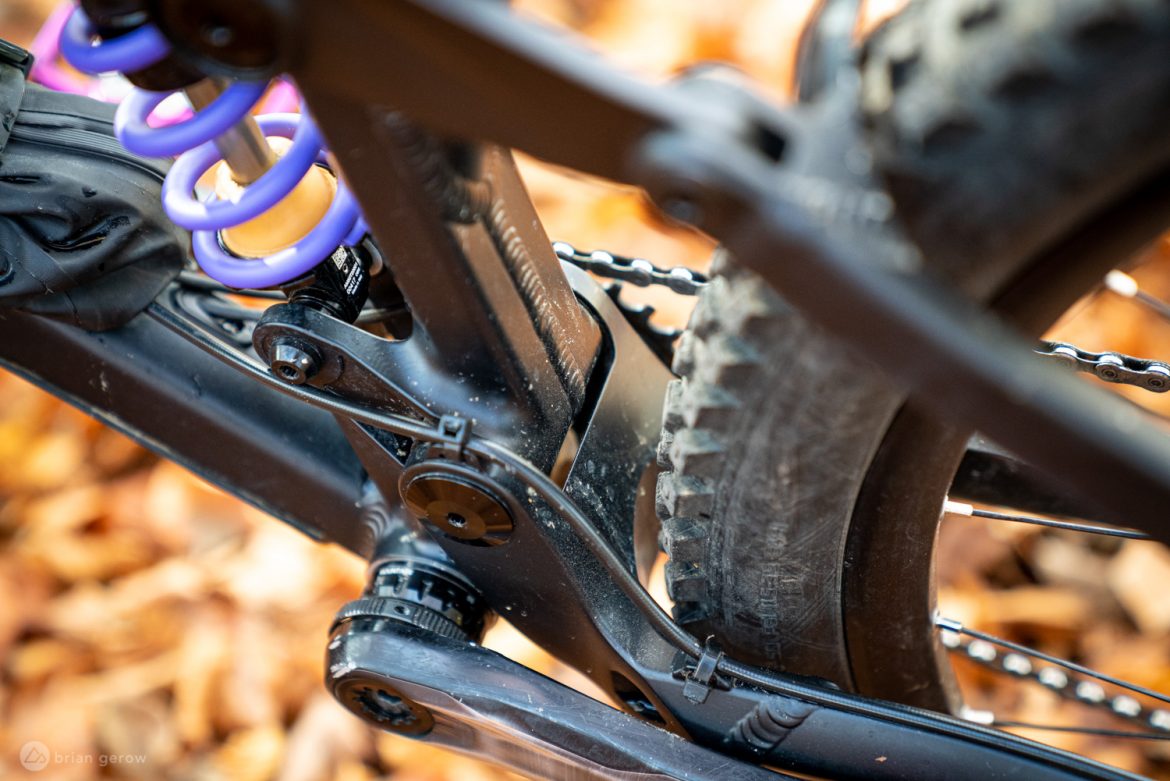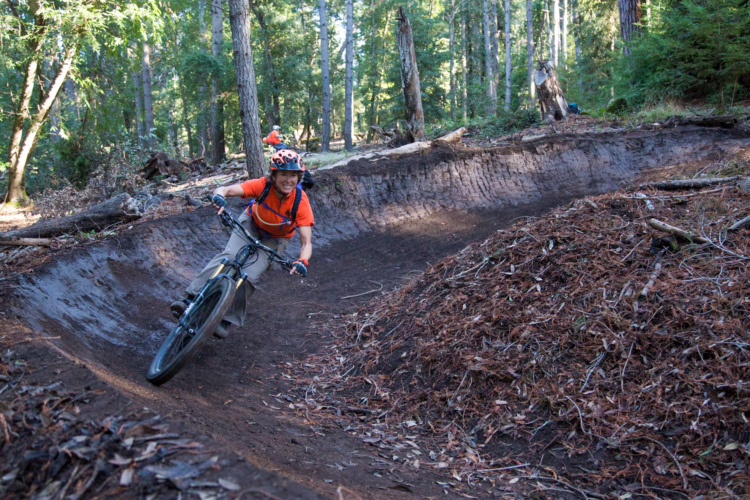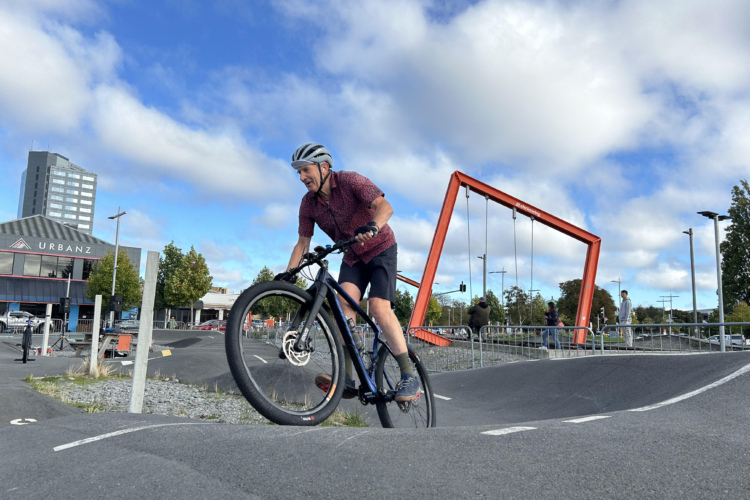On a particularly warm spring day not long ago I pulled my daughter to the top of a long climb, stretchy inner tubes expanding between us to prove their only modern use. She was practicing body position and weighting the front tire on descents, and the tube-tow more than triples the number of runs she can manage.
When we reached the top, a rider ran over to us and immediately wanted to talk about my bike. Well, really he wanted to tell me that the Privateer 161 test rig that I was riding is an exact copy of his Raaw Madonna. He was so excited to tell me that the bike was a “copy” that he bulldozed the conversation I was already engaged in and repeated himself multiple times to make sure I agreed with him. I didn’t agree, but in these situations, the truth is rarely a focal point. He needed to be right, and it seemed that he had waited a long time to tell someone on a Privateer that his bike was the real deal. Instead of digging into the details with him, I simply engaged in what I was doing prior and let him rant as we prepared to descend.
It didn’t matter that this random rider should know the finer details of our frames. What does matter is that there are important differences between these two frames and a lot of others that use the same suspension linkage within the same genres. That delineation seems worth outlining, and this cat handed me an easy example. We have tested several “enduro” bikes with Horst-link rear ends that all show a completely different personality on the trail. Some move like a roadside rabbit, happily bounding this way and that, while others are more race-bred, performing best when skipped across rocks at top speed.
To be fair to my overzealous encounteree, the Privateer 161 and Raaw Madonna look strikingly similar in real life. Both bikes are enduro-race designed, both are made from large aluminum tubes, both have 160/161mm Horst-link rear suspension systems with vertically mounted trunnion shocks that are coupled with 170 or 180mm forks, each bike places the main pivot just above the chainring and uses an alloy rocker link, the pair have external cable routing and BB’s, and either bike is fully aimed at riders who prize function and durability over form and fancy paint. Oh, and you can only buy these bikes in a flat-black or raw finish. It’s true that they look like copies of one another, but for several key reasons, they’re not.
Let’s just start with the engineers. The first Madonna was released in 2017, designed by Raaw owner Ruben Thorenbeek and his team of trusted employees. That bike has since been updated with lighter tubing, different gear-stash docking, and a new top tube shape. The Privateer 161 was designed by Alastair Beckett, with help from the Privateer team, released in 2019. Given the massive number of hours they put into designing these frames, I doubt that either of these engineering teams would appreciate the comment that their creation is a copy. There is a good chance that they looked at a few hundred other frames, including those they have ridden and owned, to make all of the design decisions for these bikes.
Considerable variation can be seen in the frame details and tubing, where the Madonna has a proprietary tube set and the 161 uses an off-the-shelf tube selection between its angles. While the standard tubes bring down the price of the frame they are not necessarily the inferior choice. All manner of steel frames have been built with the same tube sets for years, and the resulting bikes are often unique and rad. The 161 also uses fixed geometry, where the Madonna has a selection of dropout inserts that adjust the rear-to-center measurement, resulting in differing frame balance and suspension leverage. Additionally, the Madonna is available with two different rocker links to better suit riders of different sizes. Both bikes tie all of this together with the largest main-pivot bearings possible, as they both are aimed at hard-charging pilots who want to ride more than they want to wrench.
Privateer 161geometry
On to the most obvious difference between these sweet alloy rippers: the geometry. While the 161 and Madonna V2 both come in four sizes, the smallest Privateer bike only accepts 27.5″ wheels, whereas the smallest Raaw size is a 29er. The Privateer is notably longer overall, with a 470mm reach on the Size 2, where the equivalent Raaw size has a 455mm reach. Both bikes in this size use 440mm chainstays, and they both shift their chainstay lengths to balance with reach measurements across the size run. The seat tube on the Privateer is steeper than that of the Raaw to make the longer reach feel comfortable while seated, and the Raaw steerer tube angle is slightly steeper by 0.5°. The Raaw bikes keep a consistently low 35mm BB drop across the range, where the Privateer sits a touch higher at 30mm on their 29″ wheeled models. Stack measurements on the Raaw bikes are a fair bit higher, which might favor taller riders who need their handlebars raised to match their saddle height.
Raaw Madonna V2 geometry

Some riders should be able to select a frame from either brand based on the reach measurement they prefer. At 175cm tall, with a 76.5cm inseam, the Privateer Size 2 with its 470mm reach fits me just right, and I can run a 170mm dropper thanks to the short 420mm seat tube. If I were in search of a similar ride on the Madonna V2 I would need to size up to the large, with its 480mm reach, though there is a chance it would feel too long given the slacker seat tube. I also might have to mount a dropper post with less travel on the Raaw, given the frame’s longer 445mm seat tube. In the end, I would likely have a better time riding a Madonna V2 in size medium, mounting a tad longer stem and enjoying the ease of getting weight over the front tire. Hopefully, I will test one this summer to find out.
These are just some of the most stark geometry differences between these two bikes, and there are countless other factors worth considering. While one might assume that the Madonna will be a more playful bike, and the 161 more of a plow, those sensations depend greatly on which frame size you choose, what suspension is selected and how it’s tuned, and the kinematics of each bike.
While both of these Horst-link systems offer relatively similar leverage ratios and rates of progressivity, there are some distinctions that combined with their differentiated geometry will make them feel different out on the trail. For a full dig into the numbers, check out the extended graphs on the Privateer and Raaw websites.
Both bikes have a rearward axle path until about 50mm into the travel that should help maintain speed on small bumps. Once the axle swings forward, the Madonna does swing slightly further forward, on the order of a few millimeters. The anti-squat graphs that depict how much the suspension will be affected by pedaling forces are almost identical, with the Privateer running a skosh higher percentage, but the anti-rise charts that show how braking forces affect suspension are about as different as they could be.
There’s no need to understand all of those numbers or to be a geometry table aficionado to know that neither of these frames is a copy of the other. They are, however, two capable machines created by people who live to ride mountain bikes, and likely either of them will make any gravity rider equally stoked to get out and enjoy the forest.
On a final note, the Privateer frame retails for €1,799 with a RockShox Super Deluxe Ultimate air shock, while the Raaw Madonna V2 sells for €2,290 without a shock.
































3 Comments
Jun 3, 2021
Jun 2, 2021
Jun 3, 2021